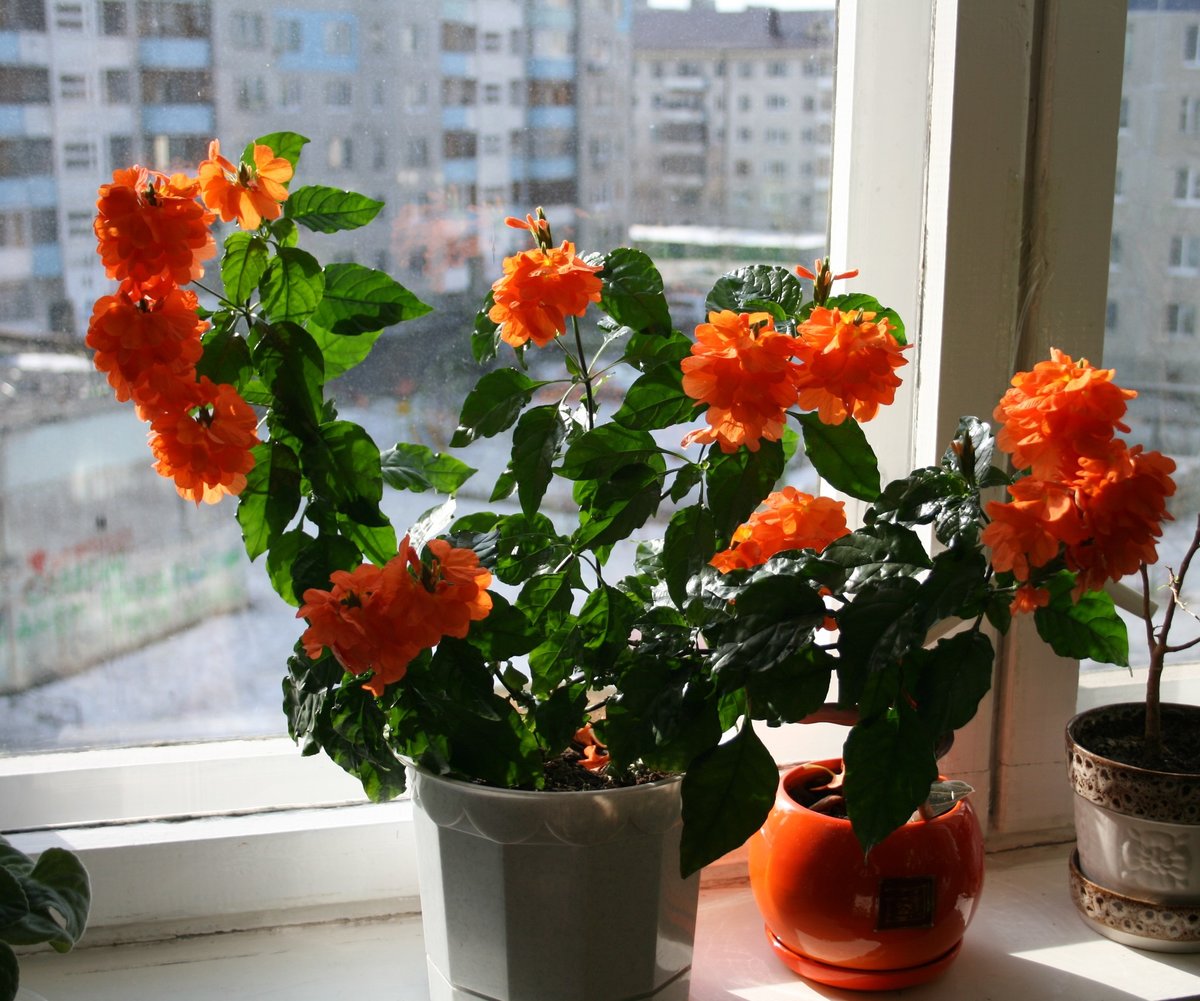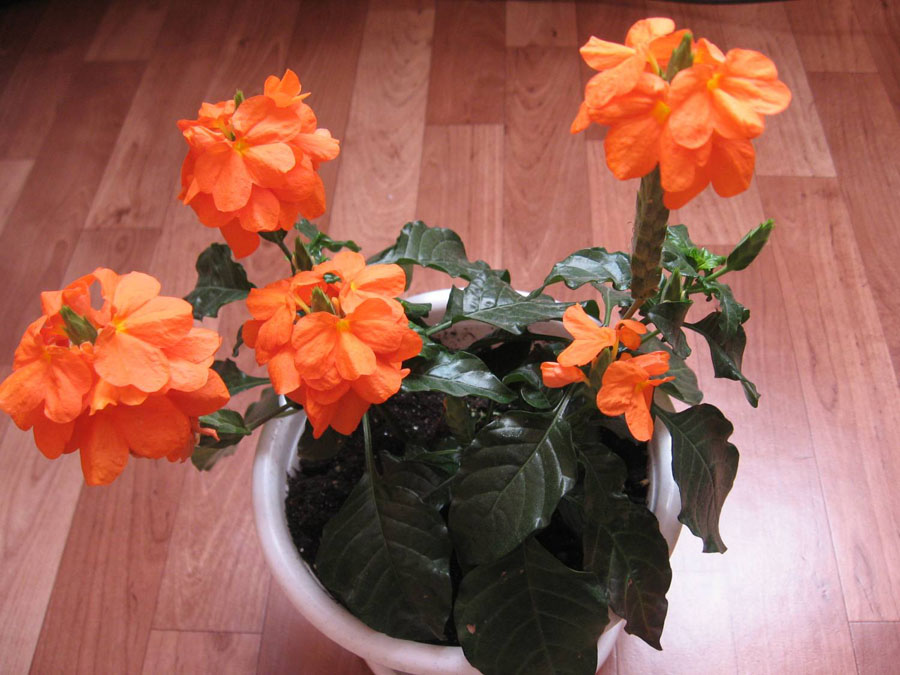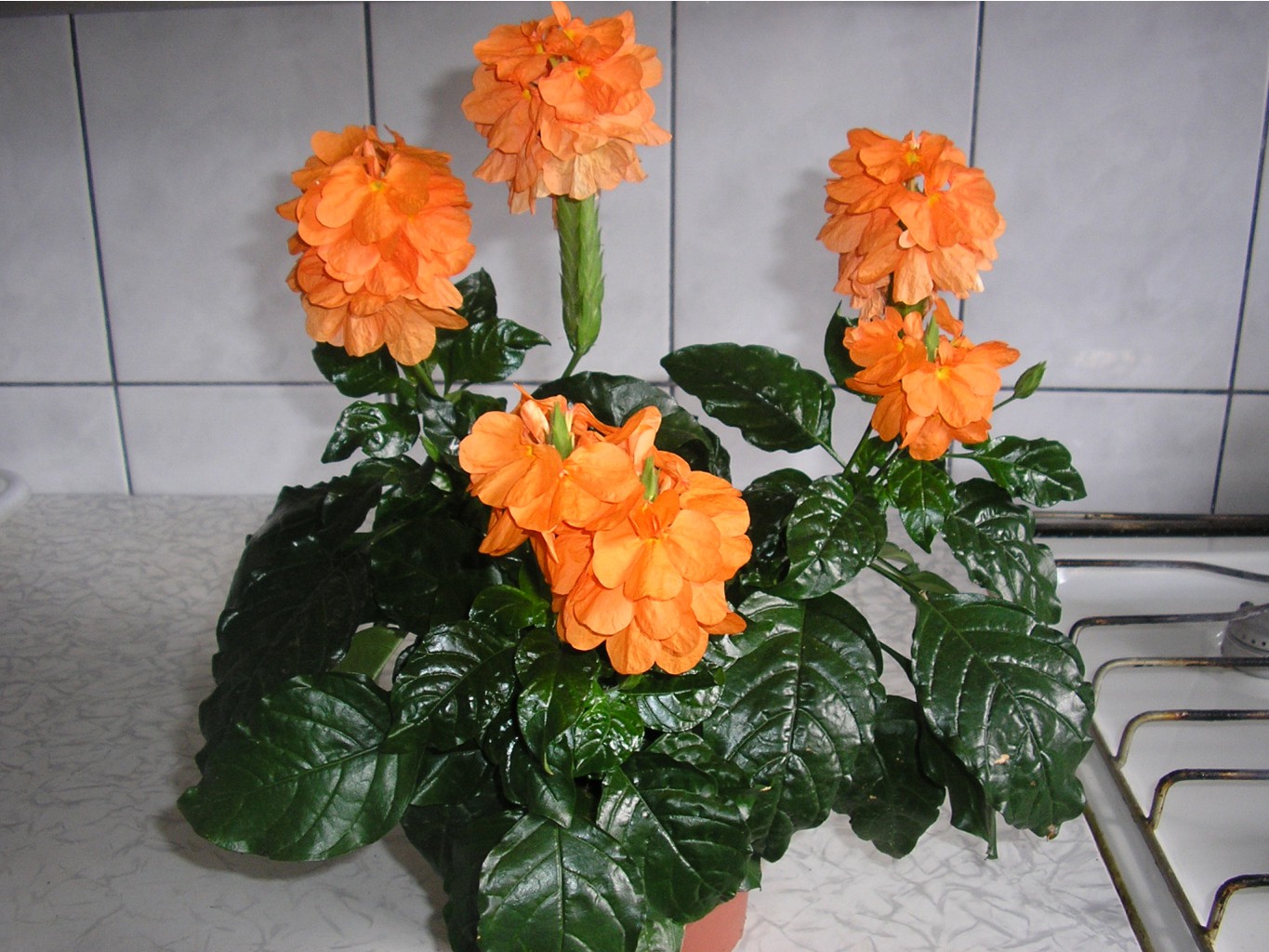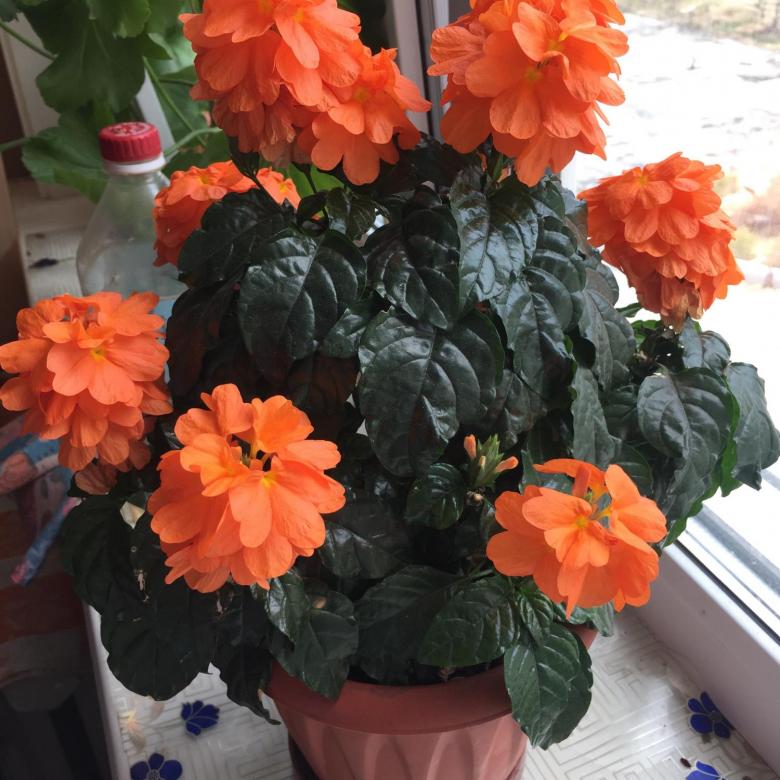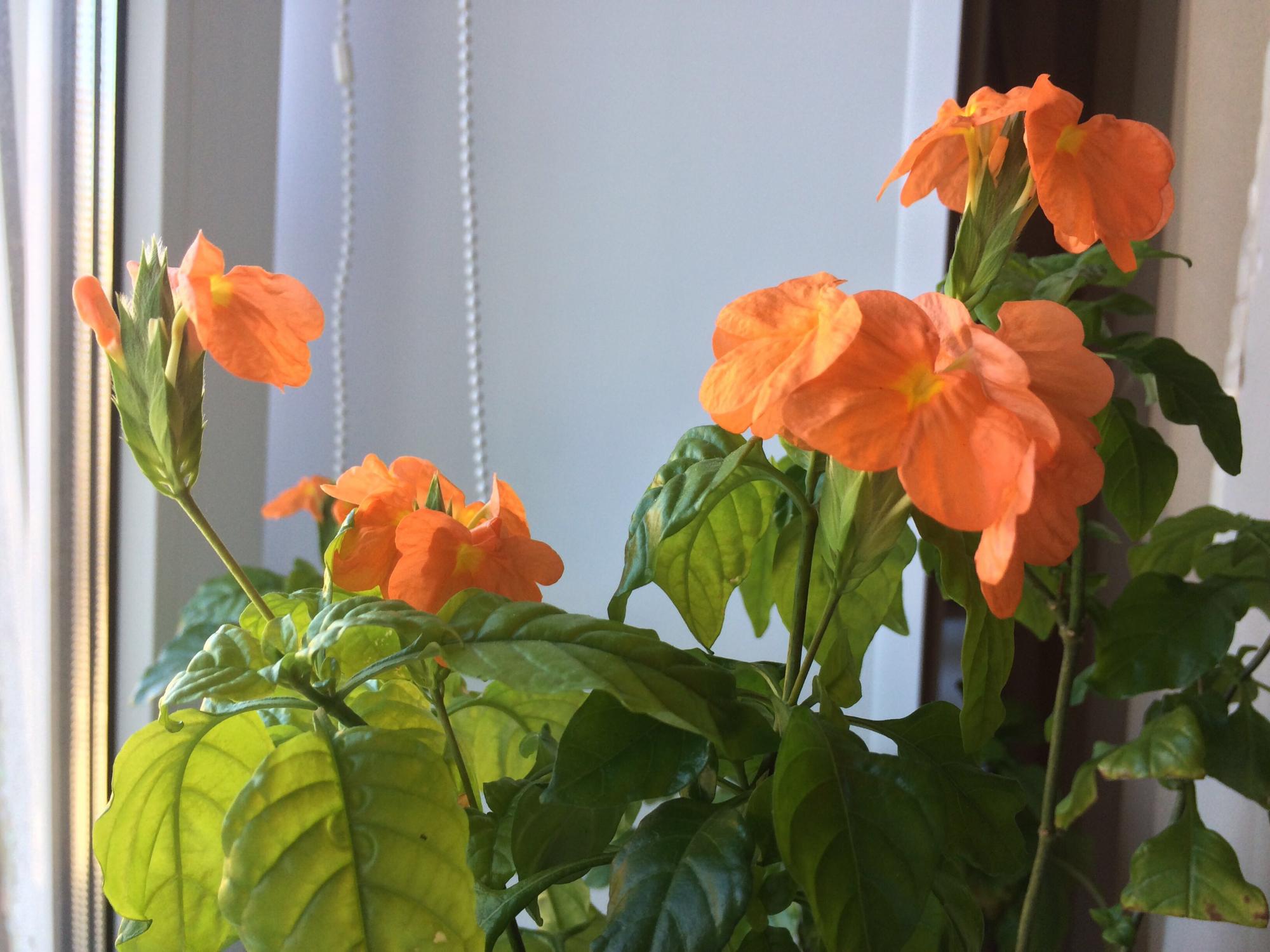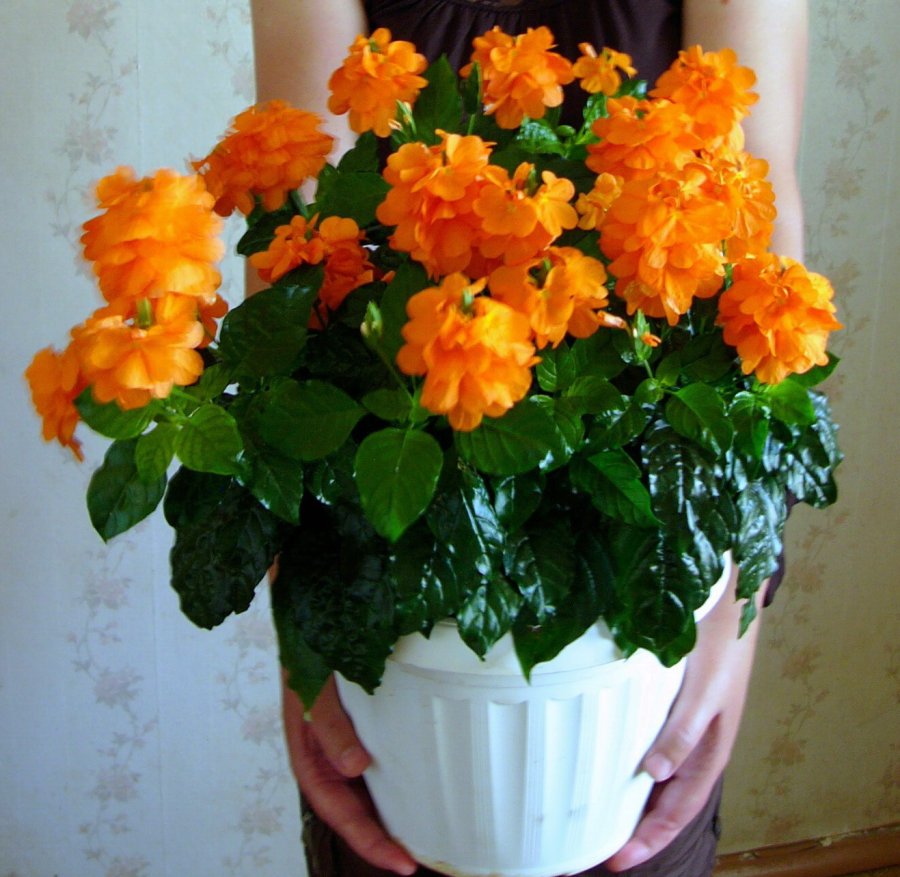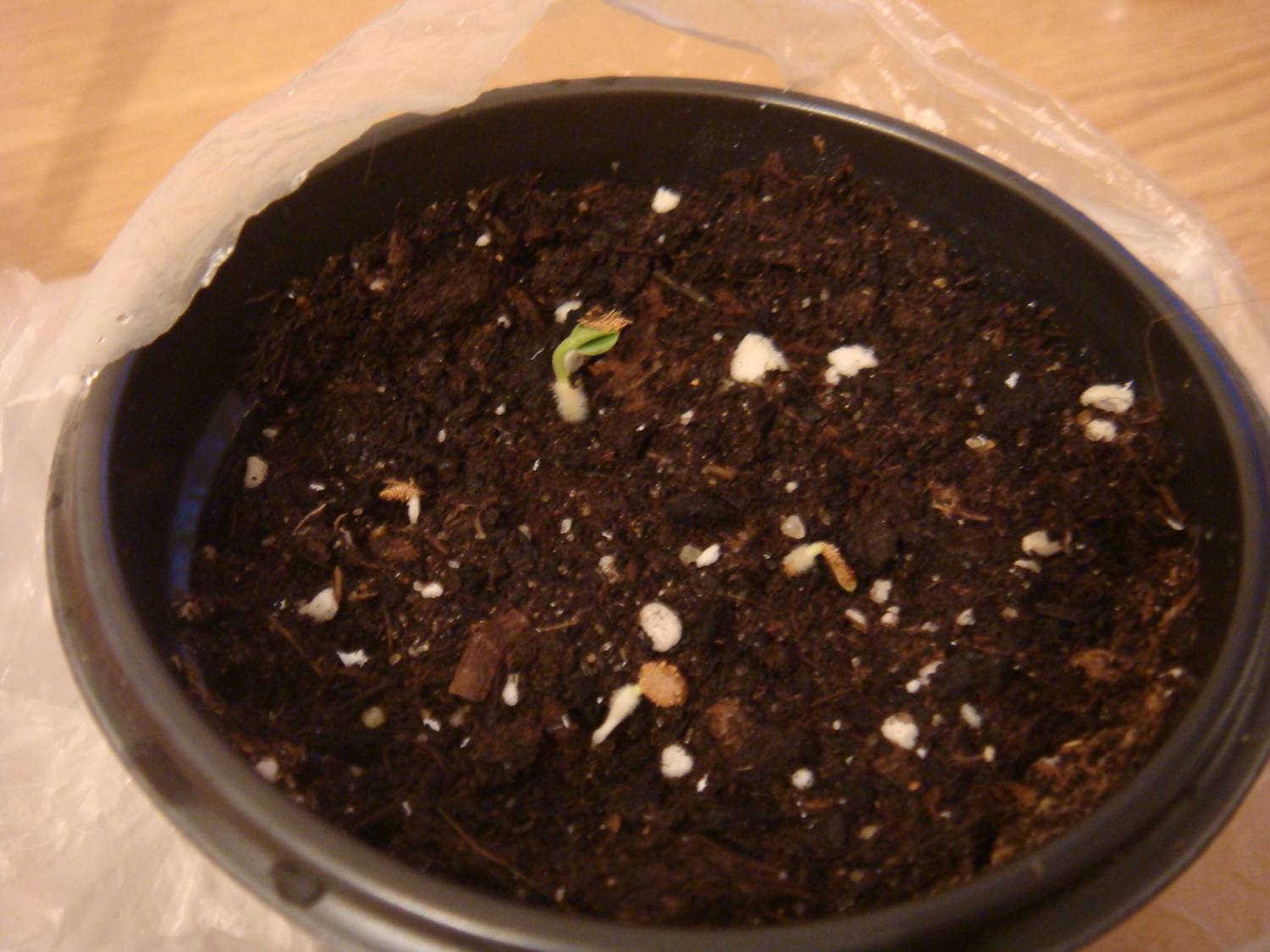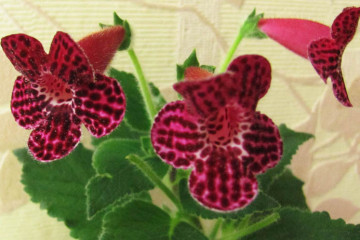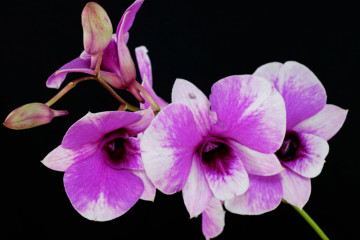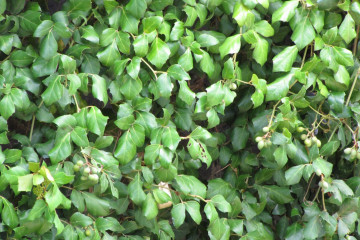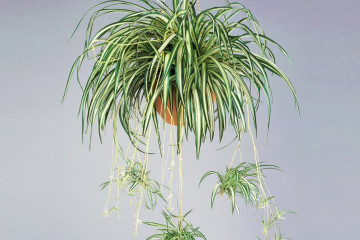Crossandra: home care and flower reproduction
Content:
Florists are just learning all the charms of such a flower as indoor crossandra. Of the advantages, they note excellent decorative qualities and long-term abundant flowering, as well as the longevity of the plant. However, in order to be able to enjoy such beauty, you need to know how to properly care for the crossandra and what conditions will need to be provided for it. Otherwise, it will simply wither away and will not demonstrate all its splendor during flowering.
Main types
Currently, not many species of crossandra are grown, as it has not yet gained sufficient popularity. However, some of them have already taken pride of place on the windowsills and have become real pets.
Orange crossandra
This variety reaches a height of 30 cm. Its leaves are dark green, the inflorescences, which are about 15 cm high, are orange. A distinctive feature of this crossandra is that it pleases with flowering longer than other varieties.
Yellow crossandra
This flower has small lanceolate leaves. The bush reaches a height of 0.5 m. The longest leaves are located at the base, to the apex they are significantly shortened. Their color is variegated, there are silvery streaks. Inflorescences are bright yellow in color.
Others
There are other equally interesting and worthy types and varieties of indoor crossandra, which flower growers should definitely pay attention to. These include:
- Crossandra of the Fortuna variety;
- Ice blue;
- Variegated;
- Red;
- Wavy;
- Green ice.
The color of flowers in the listed species can be not only red, pink or white, but even blue and greenish.
Before the crossandra settles on the windowsill, the proper care of which has many nuances, you must familiarize yourself in advance with the features of growing a flower. They may differ for each species and variety.
Home care
Crossandra is quite demanding to care and does not forgive mistakes, therefore this procedure is approached with great responsibility.
Location
Crossedra should be grown only in a well-lit place, preferably on the southern windowsill. In summer, protect young plants from burns with blinds or thin curtains. The flower loves close neighborliness with the same tropical guests of the windowsills. As an example, these can be:
- ferns;
- fittonias;
- arrowroots;
- begonias;
- calatheas, etc.
Lighting
Crossandra, which is difficult to take care of at home, loves a lot of light. This rule is no exception, even in winter. The pot with the plant should be placed on a southern windowsill, protected from direct sunlight by light shading. If there is little light, the flower simply will not bloom profusely.Sometimes florists even resort to artificial lighting in the autumn-winter period, using phytolamps for this.
Temperature
Crossandra feels comfortable at standard room temperature (+ 18-28 ° C). It is preferable that in summer this indicator does not exceed + 30 ° С, in winter it does not decrease less than + 15 ° С. Some varieties are characterized by higher cold resistance.
Crossandra is a flower that does not like sudden changes in temperature and drafts, which must be taken into account when airing a room.
Watering
Cassandra is an indoor flower, it is very sensitive not only to waterlogging of the soil, but also to drought. That is why the earthen coma should not be allowed to completely dry out. It is also unacceptable to start watering the plant before the topsoil dries up. If you leave the crossandra without watering on a dry hot day, then its leaves will wither by evening. You will need to pour settled water into a basin and place a flower pot there for an hour or even a little more. The leaves of the plant should straighten.
For watering plants, use exclusively settled water at room temperature. Moreover, in the summer, it needs more intensive irrigation than in autumn and winter. In winter, watering is carried out once every 2 weeks.
Air humidity
Cassandra naturally grows in hot and humid climates, so the room needs to create similar conditions.
To maintain such indicators, a sprayer or a special air humidifier is used. If this is not possible, then open containers of water should be placed near the flower.
Plant transplant
After purchase, the crossandra must be transplanted immediately. The flowering plant is allowed to bloom to the end, and only then they begin to work. The soil is preliminarily watered abundantly, then the flower is taken out of the pot and they are trying to carefully clean it from the store substrate. Leave only the one that is firmly fixed on the roots.
The pot for transplanting is chosen a little more spacious than the one in which the crossandra grew earlier. There must be drainage holes in the bottom. First, a little expanded clay or small pebbles are poured, which will serve as drainage, then the nutrient soil. The bush is carefully placed in the center of the container and is also covered with nutritious soil around the edges. After that, the flower is watered and, if necessary, add more earth.
Adult crossandras tolerate transplantation very painfully, therefore, they cannot be disturbed without special need. The reasons for such actions may be:
- decay of the root system;
- the roots have filled the entire space in the pot and peep out through the holes in the bottom.
Reproduction methods
Crossandra, independent reproduction of which does not present great difficulties for an experienced grower, takes root quite well. There are several proven ways to get new flowers at home.
Cuttings
For this method, cuttings are used that remain after cutting the crossandra. Their length should be about 9 cm. The lower leaves are carefully cut off, the twig is planted at an acute angle in a mixture of sand and peat. The seedling will need to organize greenhouse conditions for a while. To do this, a plastic bag is put on top of it. Before planting, the cutting is recommended to be treated with rooting stimulants.
The container is placed in a well-lit place with a temperature of + 25 ° C. After 3 weeks, the roots should form. During this time, the greenhouse is periodically ventilated and the substrate is moistened as necessary.
The method of rooting cuttings in water is not excluded. However, in order to prevent decay of the tips, you must first dissolve the activated carbon tablet in it. To make the formation of roots faster, add "Kornevin" there. After 3-4 weeks, the root system begins to form. After that, you can transplant the crossandra into a pot.
Recently, another method of rooting cuttings has gained popularity - in peat tablets. To begin with, the tablet is well moistened and squeezed, then a recess is made in the center, into which the stalk treated with Kornevin is placed. Greenhouse conditions are created for the seedling. After a month, the root system should form.
Seeds
Growing crossandra from seeds at home has one drawback. No one can guarantee that the resulting plant will inherit all the characteristics of the mother. If there is a desire to propagate a flower in this way, then you should definitely know that often indoor varieties are hybrids, therefore it is unlikely that it will be possible to preserve their characteristics.
Before sowing, the seeds are soaked for a couple of hours in a solution of any growth stimulator (for example, "Zircon"). Freshly harvested seed does not need to be soaked, since it already has excellent germination. Coconut fiber and a little sphagnum moss are additionally added to the mixture of sand and peat. This will provide good breathability and speed up the germination process.
Crossandra seeds are sown to a depth of 0.5 cm. After that, the container is placed in a bright and warm place with a temperature of about + 22 ° C and a humidity of 70%. Seedlings will begin to germinate after a couple of weeks. The greenhouse is ventilated from time to time and, if necessary, the plantings are watered. A month later, young plants are transplanted into pots, a little later they pinch the tops. Breeding in this way takes longer than grafting.
Possible growing problems
When growing crossandra in indoor conditions, flower growers periodically face some problems that require a competent and timely solution.
Leaves turn red
Flower leaves often turn red due to excess sunlight. To protect the plant, you need to create a slight shade for it at noon (you can just set the pot aside or hang a light curtain). Also, a red leaf can signal a lack of nutrients in the substrate.
Leaves dry
Sometimes the leaves of indoor crossandra begin to turn yellow and dry for no apparent reason. Such symptoms are often accompanied by the appearance of cobwebs and yellowish specks on the leaves. A spider mite is capable of causing such consequences. The plant urgently needs to be treated with a systemic insecticide (Fitoverm or Actellik will do). For prevention purposes, the leaves are regularly sprayed and wiped with a damp cloth. Spider mites actively reproduce in a dry and poorly ventilated area.
The flower does not bloom
There may be several reasons why home crossandra does not bloom. These include:
- Planting in a large pot, as a result of which the root system fills the free space for a long time.
- In winter, the plant did not have a dormant period, therefore in the summer it does not have the strength to bloom.
- In the soil, there is a deficiency of nutrients or an excess of nitrogen, as a result of which the green mass is actively growing.
- The crossandra was not pruned in time, so it did not form a new growth that could please with flowering.
- In the room where the plant is located, the conditions of detention do not correspond to the recommended ones (insufficient light, low humidity, cool, irrigation regime is violated, etc.).
You can enjoy the lush flowering only after an analysis of all the actions and conditions of keeping the crossandra has been made, and the main mistakes have been eliminated.
Video
